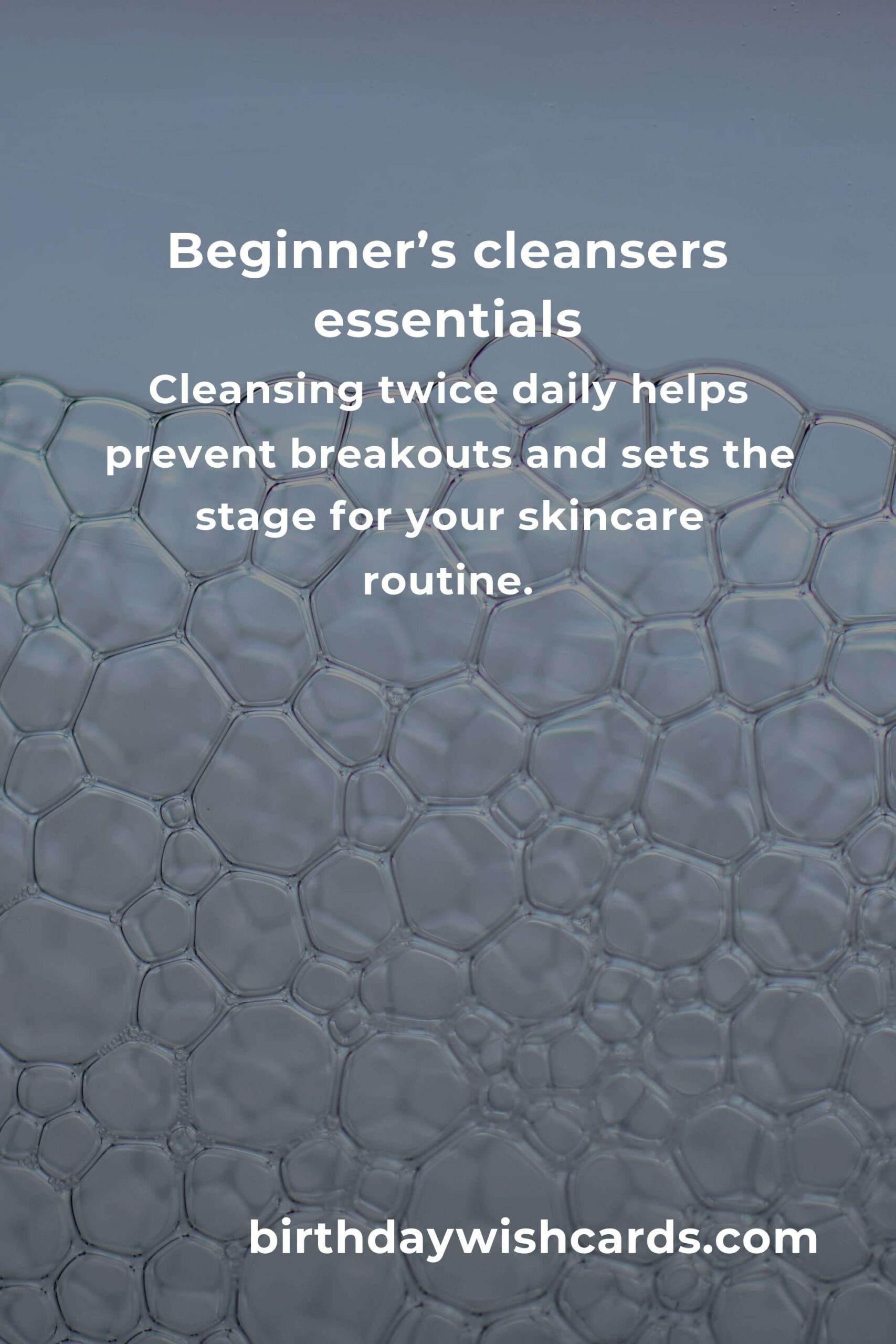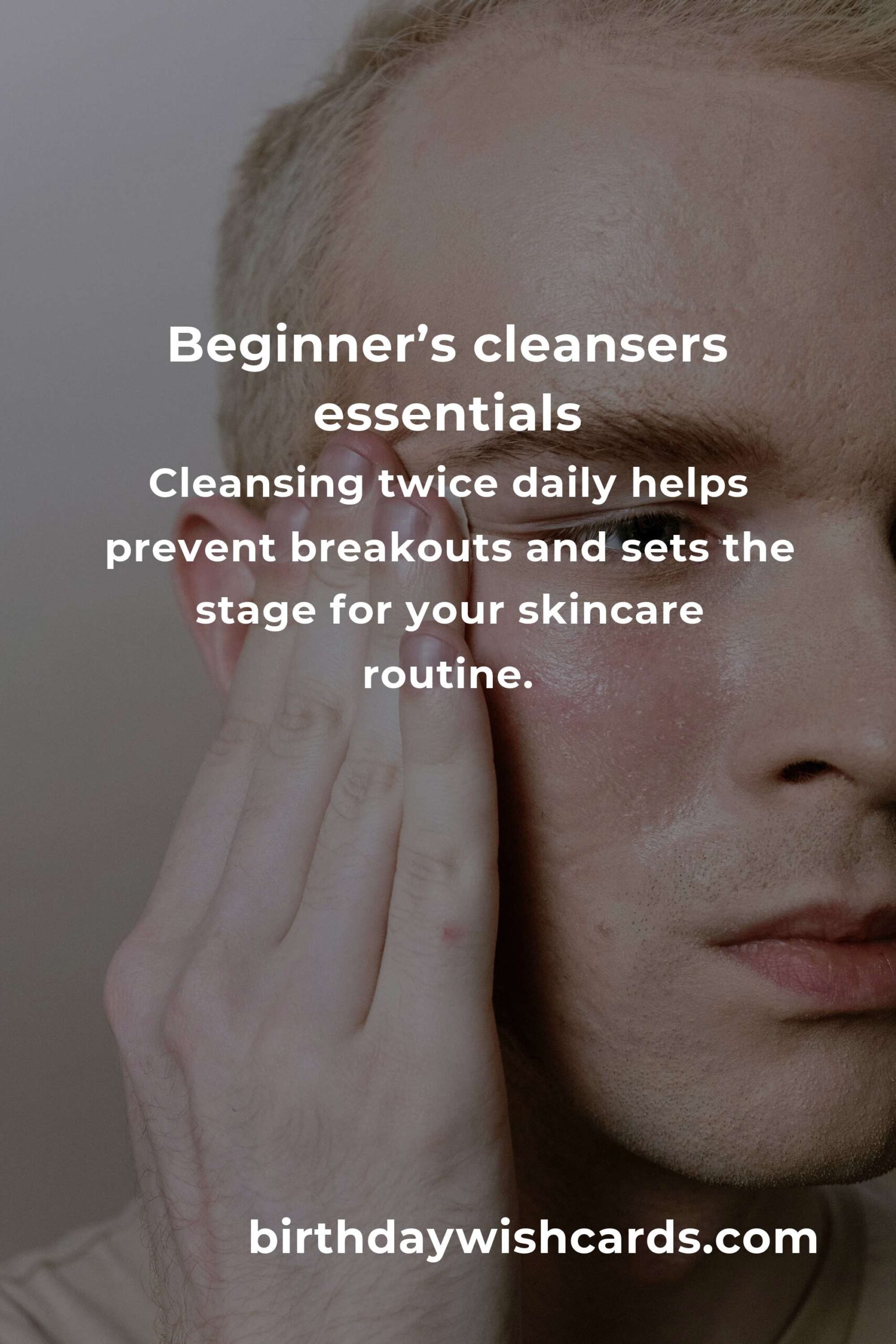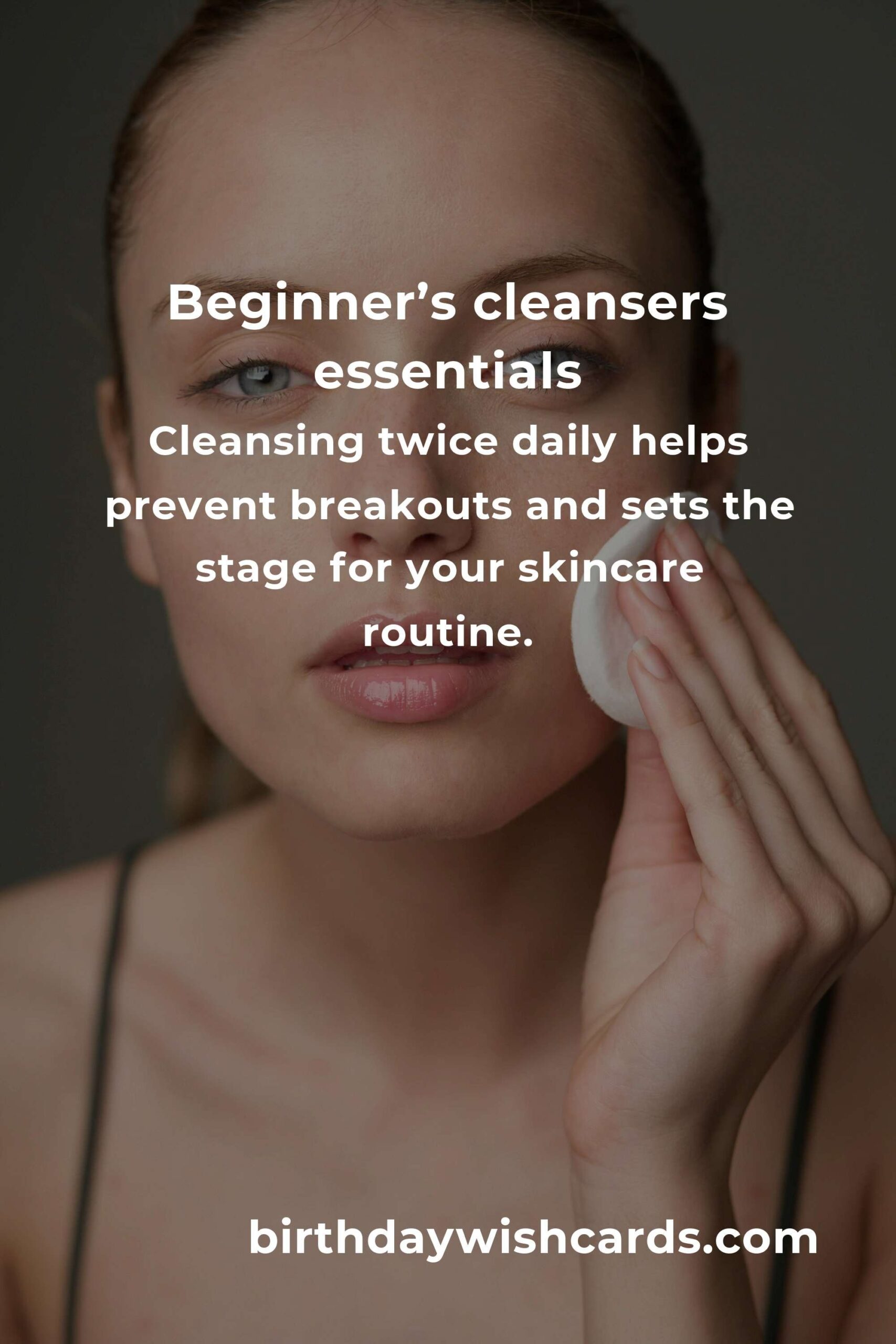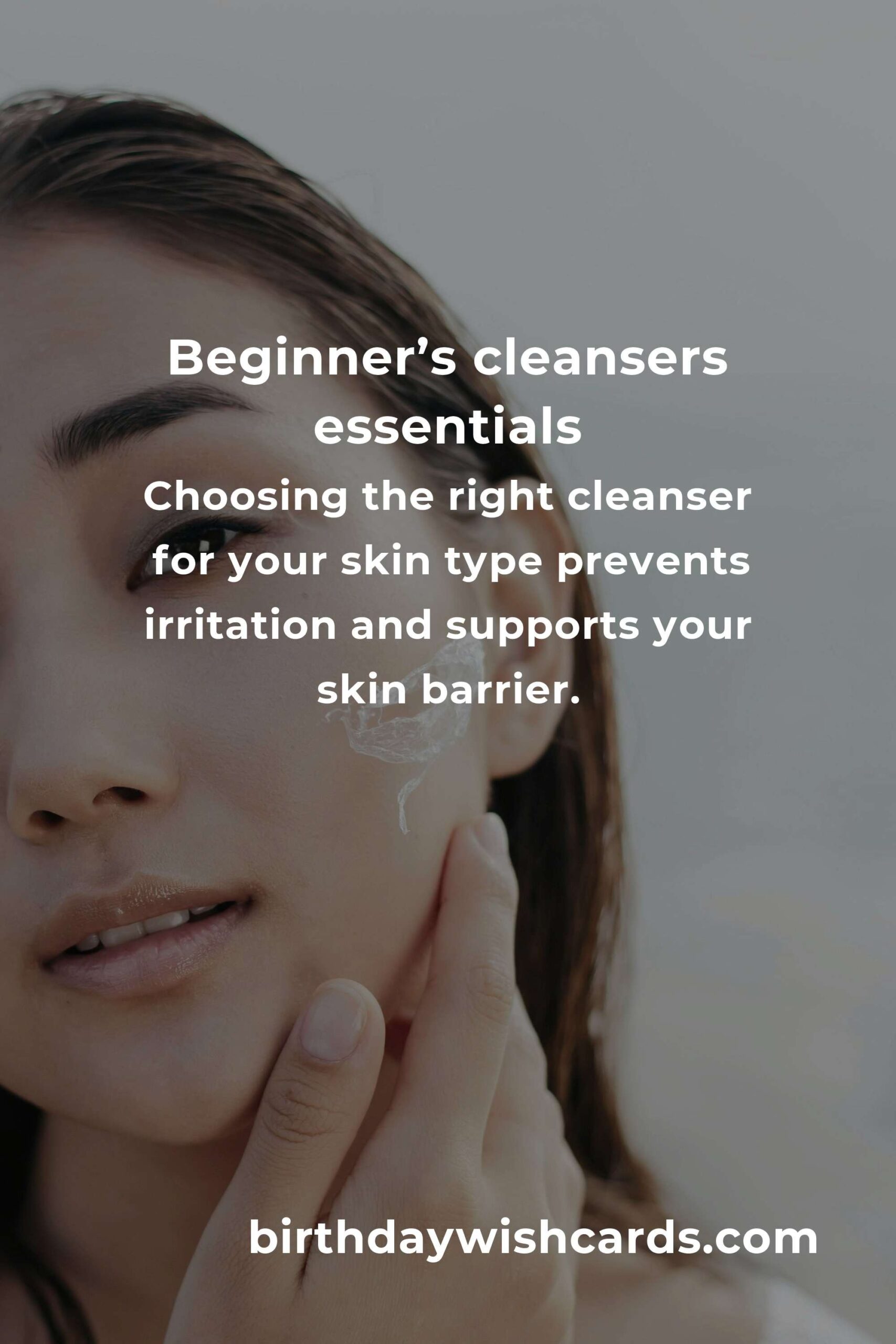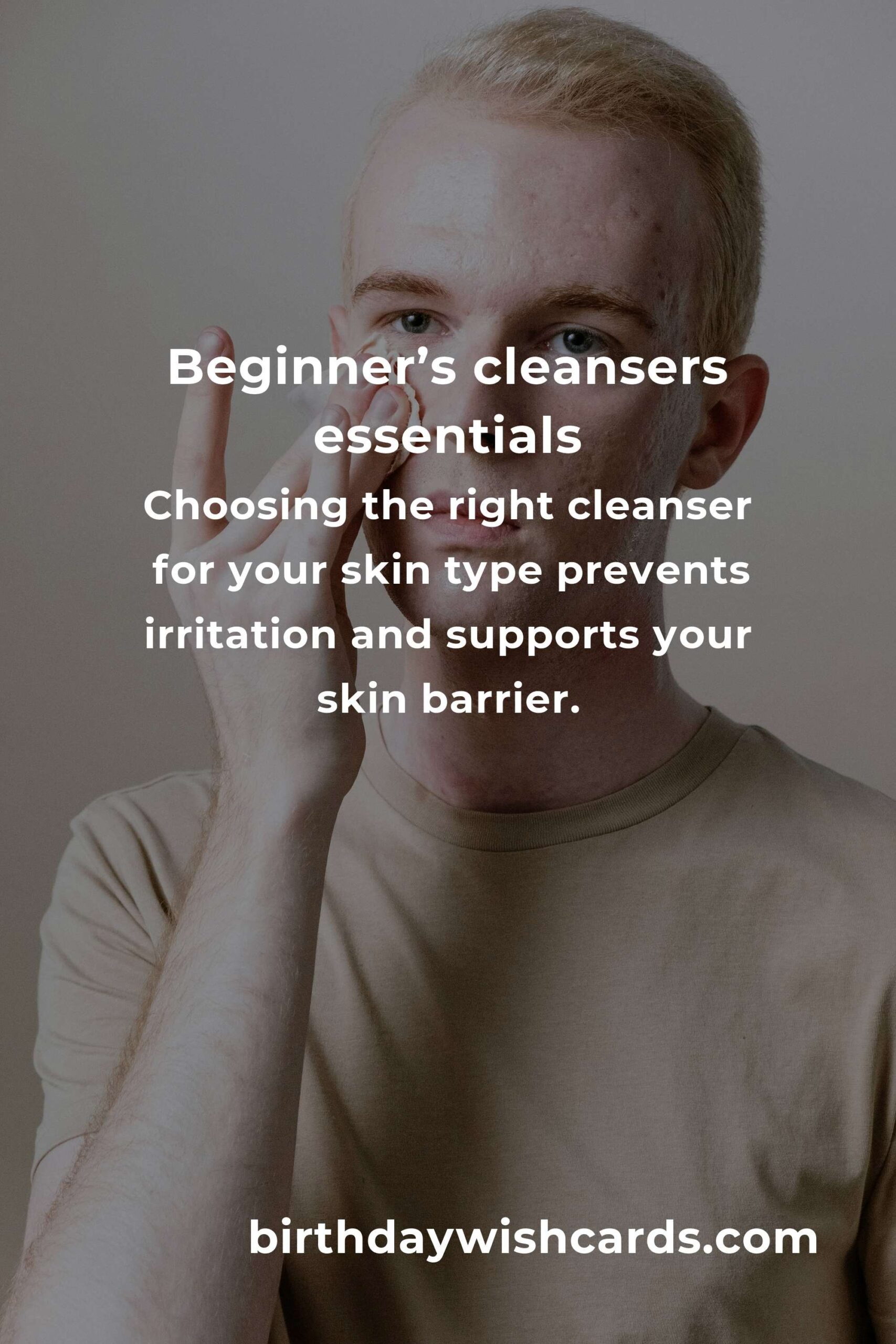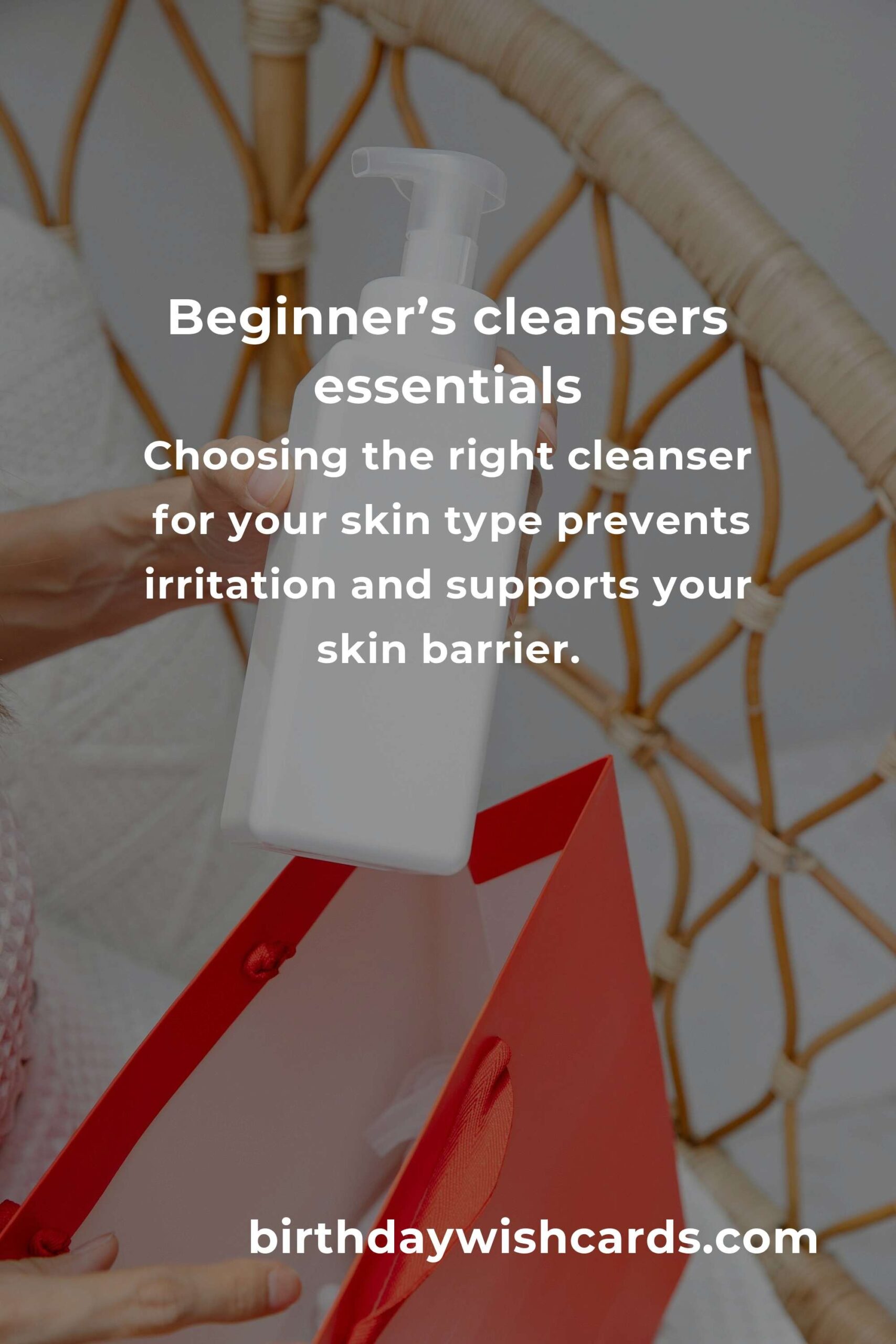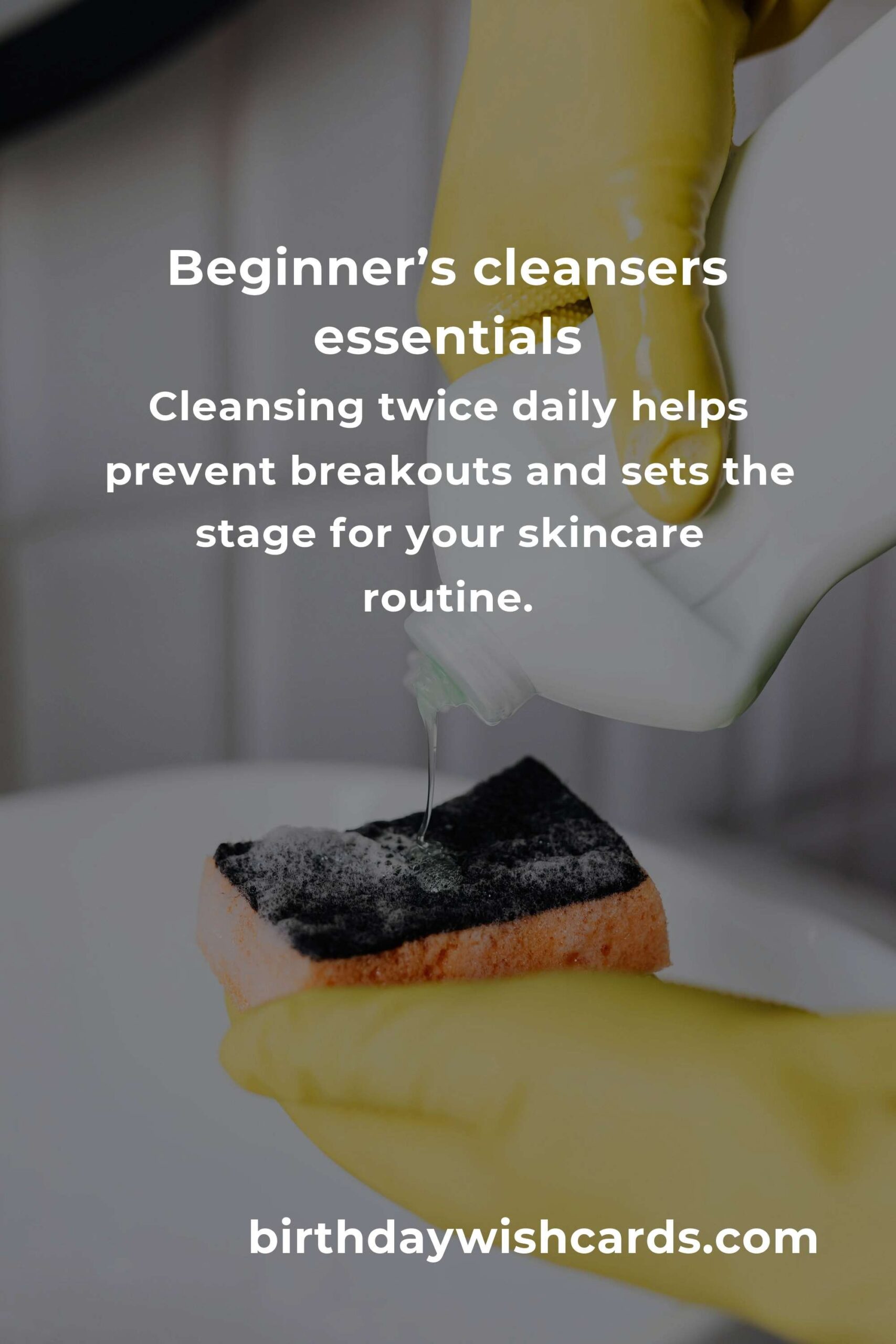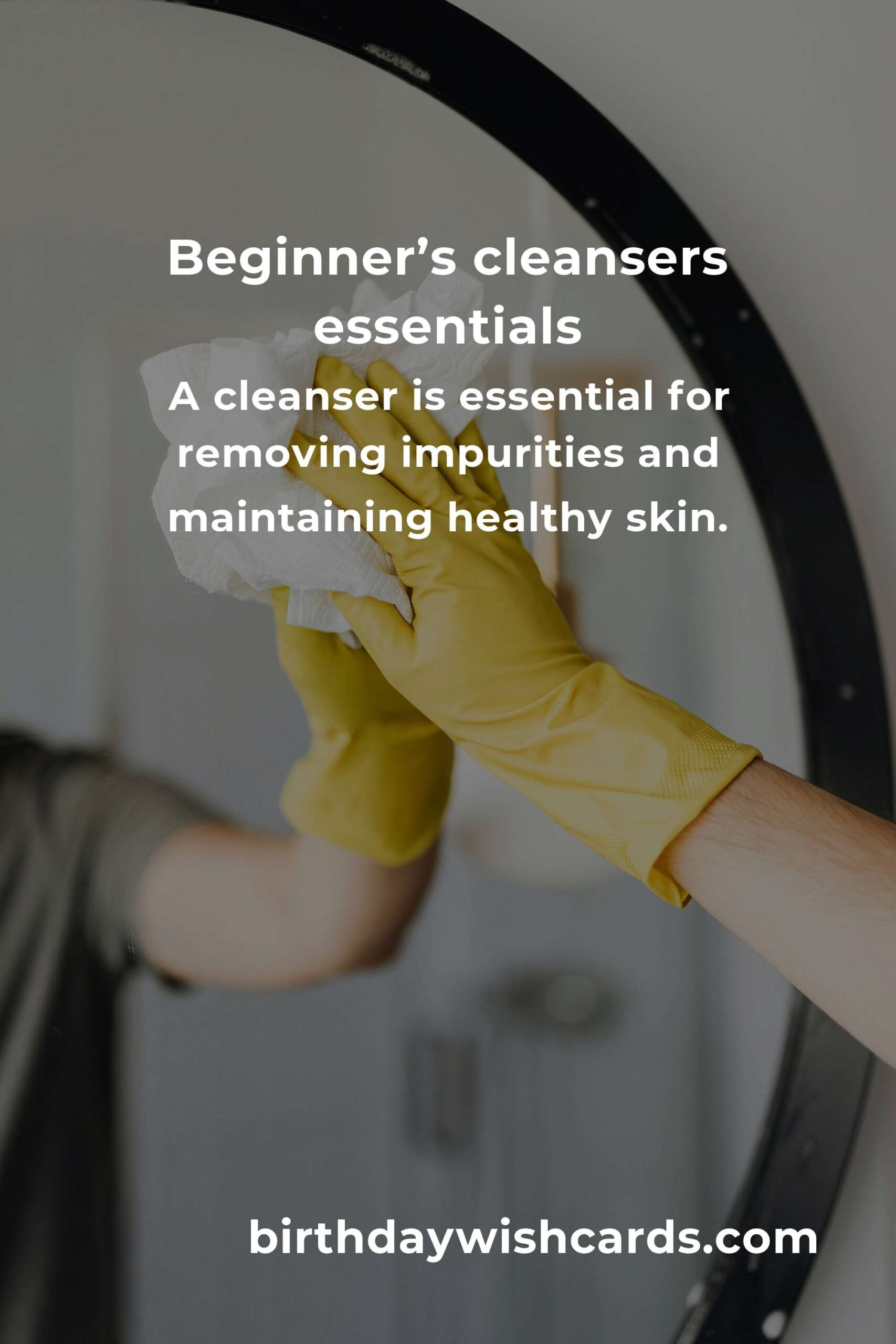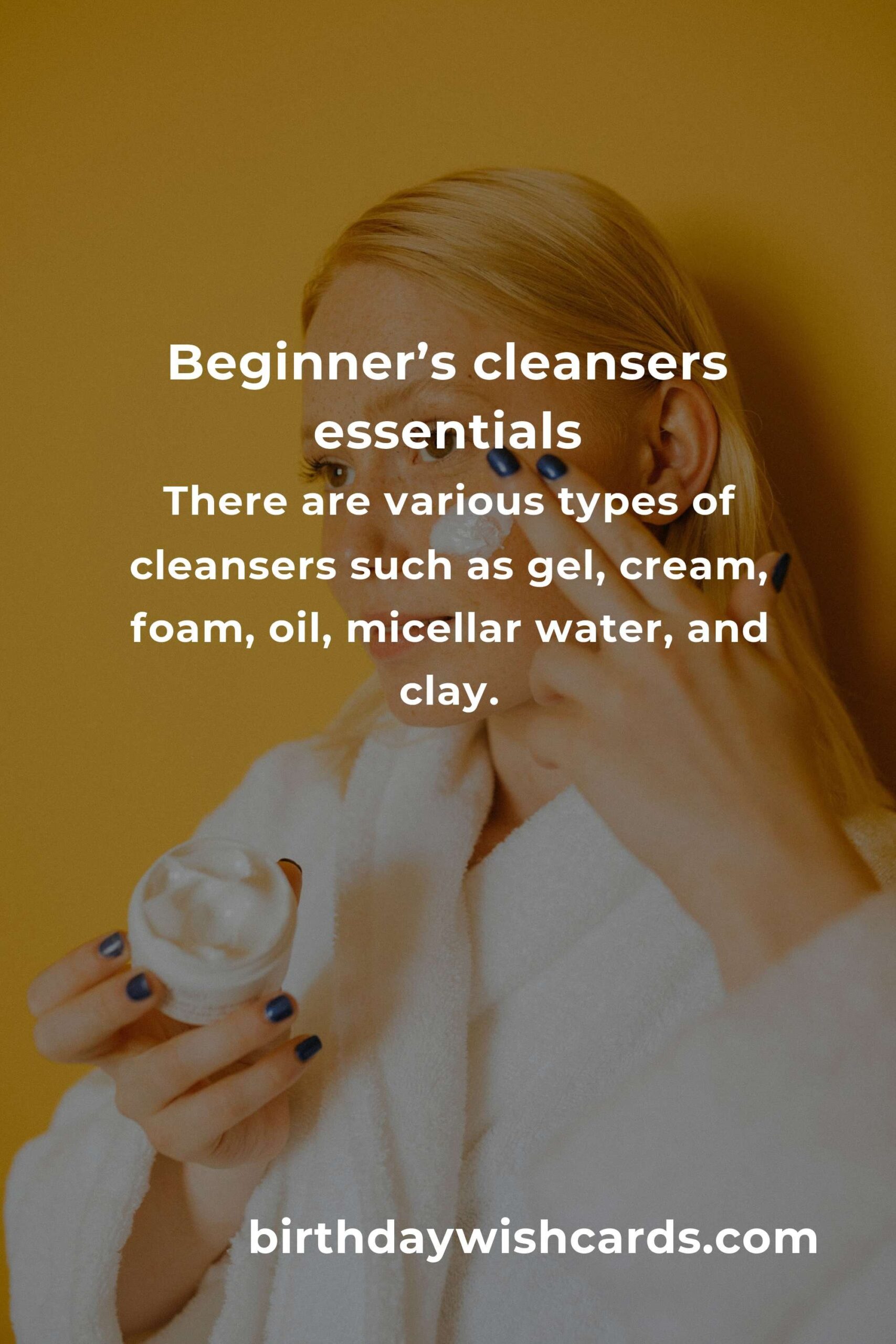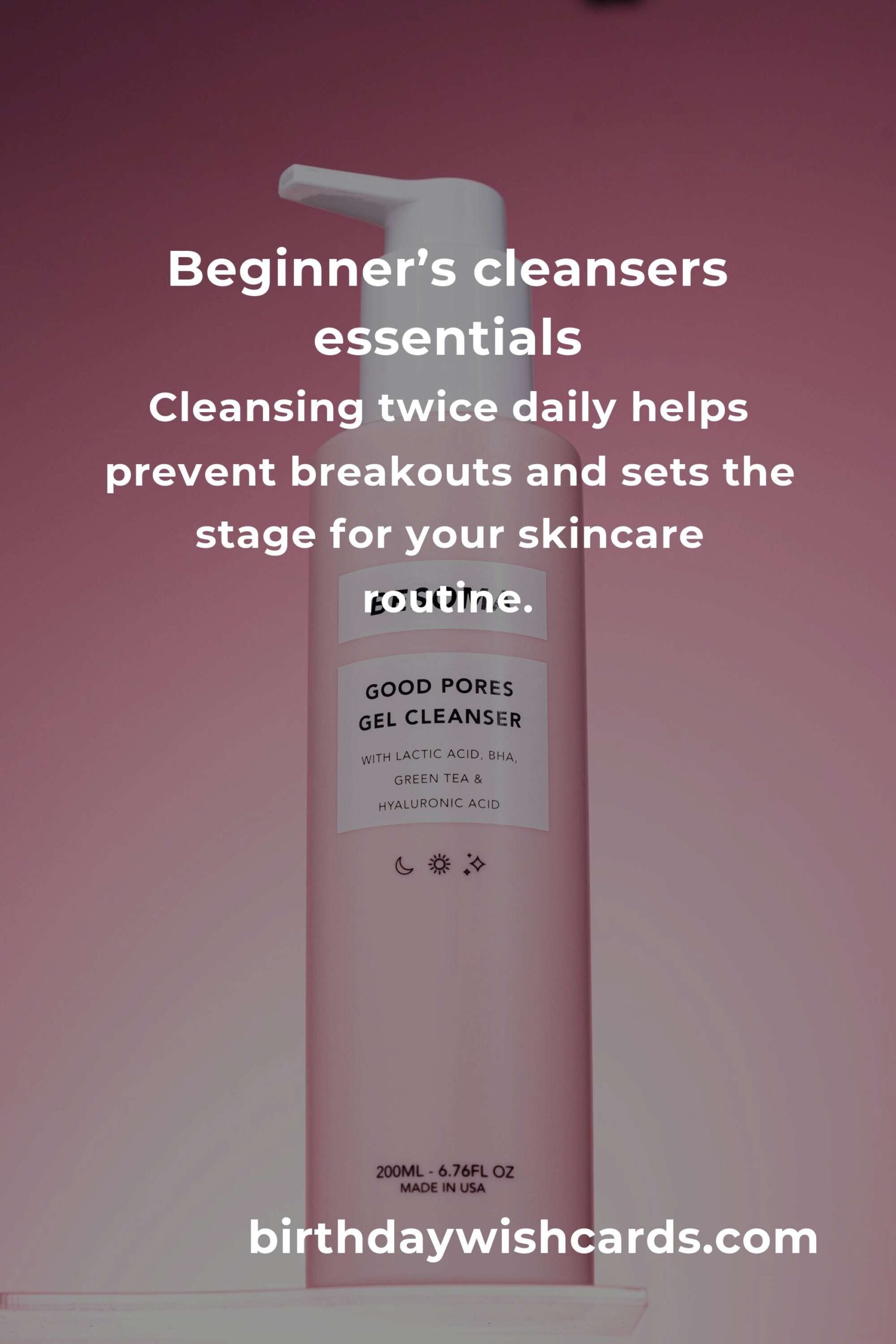
If you’re new to skincare or just starting to explore the world of cleansers, this comprehensive guide is for you! Understanding how to effectively cleanse your skin is the first, fundamental step in establishing a healthy skincare routine. With countless products and overwhelming options on the market, it’s essential to learn what cleansers do, how to choose the right one for your skin type, and how to use them correctly. Let’s demystify the cleansing process and set you on the path to radiant, healthy skin.
What is a Cleanser?
A cleanser is a skincare product designed specifically to remove dirt, oil, makeup, sunscreen, pollutants, and dead skin cells from your face. By doing so, cleansers help prevent clogged pores, reduce the risk of breakouts, and prime your skin to absorb other skincare products more effectively. Unlike ordinary soap, which can strip the skin of its natural moisture and disrupt its pH balance, facial cleansers are formulated to clean gently while maintaining your skin’s health.
Why is Cleansing Important?
Cleansing is the cornerstone of every skincare routine because it:
- Removes impurities, oils, and environmental pollutants.
- Prevents breakouts by keeping pores clear.
- Prepares your skin for serums, moisturizers, and treatments.
- Maintains a healthy skin barrier.
Skipping this important step can lead to dullness, congestion, and even accelerate the signs of aging. No matter your skin type, effective cleansing ensures you’re starting with a clean slate every day and night.
Types of Cleansers
Cleansers come in a variety of forms to cater to different skin needs and preferences. Here are the most common types you’ll find:
1. Gel Cleansers
These water-based cleansers have a gel-like consistency and are great for oily and acne-prone skin. Gel cleansers are typically formulated to deeply cleanse, help unclog pores, and help control excess oil without stripping the skin.
2. Cream Cleansers
Cream (or milk) cleansers have a thick, creamy texture. They gently moisturize while cleansing, making them ideal for dry or sensitive skin types. Cream cleansers usually leave the skin feeling soft and nourished after use.
3. Foam Cleansers
Foam cleansers start out as a cream or gel and transform into a rich lather. They efficiently remove dirt, oil, and makeup. These cleansers are great for those with combination or oily skin, but can be drying for sensitive or very dry skin.
4. Oil Cleansers
Oil cleansers use nourishing oils to dissolve makeup, sunscreen, and sebum that water-based cleansers might leave behind. Oil cleansing is gentle and effective for removing even heavy makeup, and works well for most skin types, including oily skin.
5. Micellar Water
Micellar water is a no-rinse, gentle cleansing option. It contains micelles (tiny oil molecules) suspended in water that trap dirt, oil, and makeup. It’s ideal for sensitive skin, on-the-go cleansing, or as a first step in a double cleansing routine.
6. Clay Cleansers
Formulated with clay minerals, these cleansers absorb excess oil, deeply clean pores, and reduce shine. They are especially helpful for oily and acne-prone skin, but may be too drying for sensitive or dry skin types when used frequently.
How to Choose the Right Cleanser for Your Skin Type
Picking the wrong cleanser can cause irritation, dryness, or breakouts. Here’s how to match your cleanser to your skin type:
Dry Skin
Opt for cream, milk, or oil cleansers containing hydrating ingredients like glycerin, hyaluronic acid, or ceramides. Avoid cleansers with sulfates or high alcohol content, which can further dry out your skin.
Oily Skin
Look for gel, foam, or clay cleansers with ingredients like salicylic acid, niacinamide, or tea tree oil. These help control sebum production and clear out clogged pores. Oil cleansers are also effective, as they dissolve excess oil without stripping your skin.
Combination Skin
Choose mild foaming cleansers or gel cleansers that balance oil and hydration. Avoid harsh formulas that might dry out certain areas while failing to clean oilier zones.
Sensitive Skin
Stick to fragrance-free, hypoallergenic options like micellar water or gentle cream cleansers. Look for ingredients known for soothing, such as aloe vera, chamomile, or calendula.
Normal Skin
Lucky you! Most cleansers will work for you, but it’s best to opt for gentle, non-stripping formulas that maintain your skin’s natural barrier.
How to Cleanse Your Face: Step-By-Step
- Wash Your Hands: Always cleanse with clean hands to avoid transferring bacteria to your face.
- Remove Makeup (if needed): Use a makeup remover or oil-based cleanser before washing.
- Wet Your Face: Use lukewarm water to splash your face and open up the pores slightly—never hot water as it can dry out your skin.
- Apply Cleanser: Use a dime-sized amount (or as directed) and gently massage it into your face with circular motions. Focus on areas prone to oil or makeup build-up.
- Rinse Thoroughly: Use lukewarm water to rinse away all the cleanser.
- Pat Dry: Gently pat, not rub, your face dry with a clean towel.
- Follow Up: Apply a toner, serum, and moisturizer suitable for your skin type.
Common Cleansing Mistakes to Avoid
Even seasoned skincare enthusiasts make cleansing mistakes. Here are a few to watch out for:
- Over-cleansing: Cleansing too often (more than twice daily) can strip your skin of natural oils and disrupt the moisture barrier.
- Using hot water: Hot water can dry out and irritate skin, especially sensitive skin types.
- Skipping the rinse: Failing to rinse off all cleanser residue can leave irritating ingredients behind.
- Using the wrong product: A cleanser not suited to your skin type can worsen concerns rather than improve them.
- Harsh scrubbing: Gentle massaging is enough—aggressive scrubbing damages your skin’s protective layer.
The Double Cleansing Method Explained
Double cleansing has grown popular in recent years, especially as part of Korean and Japanese skincare routines. This two-step process typically involves:
- Step One: Using an oil-based cleanser or cleansing balm to dissolve makeup, sunscreen, and surface debris.
- Step Two: Following up with a water-based cleanser to remove sweat, dirt, and any residual oil.
This technique ensures a deeper clean, especially for those who wear heavy makeup, sunscreen, or live in polluted urban environments. However, double cleansing isn’t necessary for everyone—those with dry or sensitive skin may benefit from a single gentle cleanse instead.
Ingredients to Look For (and Avoid) in a Cleanser
Just like any skincare product, reading the ingredient list helps you understand how a cleanser may interact with your skin:
Beneficial Ingredients
- Glycerin and Hyaluronic Acid: Hydrate and maintain moisture.
- Ceramides: Strengthen your skin barrier.
- Salicylic Acid: Helps treat acne and unclog pores.
- Aloe Vera and Calendula: Soothe irritation.
Ingredients to Avoid
- Sulfates (e.g., SLS): Stripping detergents that can cause irritation and dryness.
- Fragrance: Especially for sensitive or allergy-prone skin, fragrance can be a common irritant.
- Alcohol: Certain drying alcohols (like denatured alcohol) can deplete the skin of moisture.
FAQs on Cleansing for Beginners
1. How often should I cleanse my face?
For most people, cleansing twice daily—morning and night—is sufficient. If your skin is dry or sensitive, cleansing once at night might be enough. Adjust based on your skin’s needs, activity level, and exposure to pollutants or makeup.
2. Should I use a cleanser if I don’t wear makeup?
Absolutely! Even if you don’t wear makeup, your skin accumulates oil, sweat, dirt, and pollution throughout the day and night. Cleansing keeps your complexion fresh and free from clogged pores.
3. Can I cleanse my face with just water?
Water alone isn’t enough to remove oil, sunscreen, or oil-based impurities. A good cleanser helps emulsify and lift away substances that water can’t tackle on its own.
4. Are natural or DIY cleansers better?
Natural cleansers can be beneficial, but not all “natural” substances are gentle or safe for your skin. Always patch-test DIY recipes and consider your skin sensitivities before use.
5. How long does it take to see results from a new cleanser?
Most people see a difference in their skin’s cleanliness and texture within days. However, if you’re targeting specific problems like acne or sensitivity, give your new cleanser a few weeks to assess its impact.
Beginner Cleansing Routine: Sample Step-by-Step
If you’re overwhelmed, start simple:
- Choose a gentle cleanser suitable for your skin type.
- Wash your face each morning and evening.
- Apply a moisturizer after cleansing to lock in hydration.
- Add sunscreen as your final AM step.
- Consider adding toner or treatments once you’re comfortable.
Consistency is the key to seeing benefits!
Conclusion: Make Cleansing a Skincare Ritual
Cleansing is more than just removing dirt and makeup—it’s about caring for your skin, maintaining its health, and building the foundation for all your other skincare steps. By choosing the right cleanser for your unique skin needs and using proper cleansing techniques, you’re setting yourself up for visible, long-term results. Don’t be afraid to experiment within your comfort zone, and remember: even the simplest routine can deliver glowing skin if you stick with it. Happy cleansing!
A cleanser is essential for removing impurities and maintaining healthy skin.
Cleansing twice daily helps prevent breakouts and sets the stage for your skincare routine.
Choosing the right cleanser for your skin type prevents irritation and supports your skin barrier.
There are various types of cleansers such as gel, cream, foam, oil, micellar water, and clay.
Double cleansing can provide a deeper clean, especially for makeup users.
Avoid over-cleansing and harsh ingredients to keep your skin balanced.
Consistent and gentle cleansing delivers visible, long-term skin benefits.
#skincare #cleansers #beauty #cleansing #beginnerguide #facialcare

